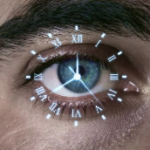Lattice Dystrophy
Lattice dystrophy is one of the most common types of corneal dystrophy and is characterized by the presence of abnormal protein fibers throughout the stroma. The condition can occur at any age, but it most often presents itself during childhood, between the ages of 2 to 7.
This disorder is characterized by a lattice-like pattern of protein fiber deposits that develop in the stroma layer of the cornea. The deposits gradually increase over time and grow opaque, creating cloudiness and impairing vision as they take over more and more of the stroma.
Sometimes these protein deposits can accumulate under the epithelium layer of the cornea. This can erode the epithelium and cause a condition called recurrent epithelial erosion. This erosion alters the cornea’s normal curvature and causes temporary vision problems. It can also expose the nerves that line the cornea and cause irritation.
To mediate the pain, an ophthalmologist may prescribe eye drops and ointments to reduce the friction of the eyelid against the cornea and sometimes an eye patch may be used to immobilize the eyelid. The erosions usually heal within days, although some pain may be felt for the following weeks.
For those with lattice dystrophy, usually by age 40, enough scarring has occurred under the epithelium to significantly impact vision and a corneal transplant is usually needed. Some patients are also able to be treated with phototherapeutic keratectomy (PTK). PTK is a laser surgery used to reshape the cornea and remove cloudiness to restore vision.

